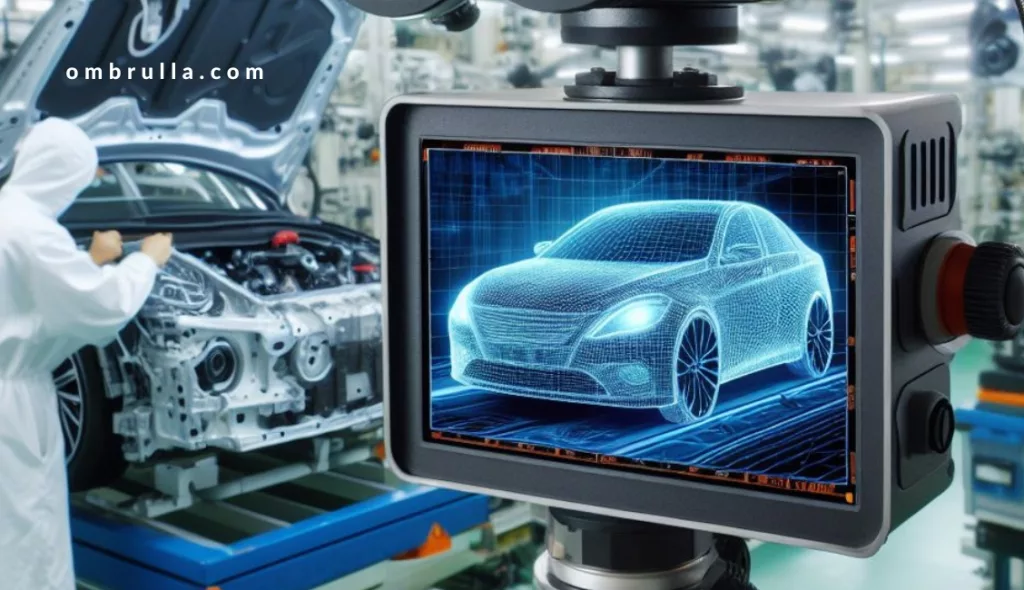
In the fast-paced world of automotive manufacturing, ensuring product quality and reliability is paramount. Even the smallest defect in a vehicle component can lead to safety hazards, product recalls, and damaged brand reputation. To address these challenges, the automotive industry is turning to advanced technologies, such as AI visual inspection, to revolutionize quality control processes. In this blog post, we’ll explore how AI visual inspection is reshaping automotive manufacturing, from detecting imperfections in engine parts to ensuring the flawless finish of body panels.
The Importance of Quality Control in Automotive Manufacturing: Quality control has always been a cornerstone of automotive manufacturing. From the assembly line to the showroom floor, every vehicle undergoes rigorous testing and inspection to meet stringent quality standards. However, traditional inspection methods are often time-consuming, labor-intensive, and prone to human error. This is where AI visual inspection steps in, offering a faster, more accurate, and cost-effective solution to quality control challenges.
AI Visual Inspection in Action:
AI visual inspection is employed at various stages of automotive production, each with its unique set of challenges and requirements.
- Engine Components: In the heart of every vehicle lies a complex assembly of engine components, each vital to its performance and reliability. AI visual inspection systems are used to scrutinize components such as cylinder heads, pistons, crankshafts, and valves for defects, irregularities, or imperfections. High-resolution cameras coupled with advanced machine learning algorithms can detect anomalies that may escape the human eye, ensuring that only flawless parts make it into the final assembly.
- Body Panels and Paint: The exterior appearance of a vehicle is often a crucial factor in consumer purchasing decisions. AI visual inspection plays a pivotal role in ensuring the flawless finish of body panels and paintwork. By analyzing paint thickness, surface texture, and color consistency, AI-powered inspection systems can identify defects such as scratches, dents, or paint bubbles with unmatched precision. This not only enhances the aesthetic appeal of the vehicle but also protects against corrosion and premature wear.
- Electrical Systems: Modern vehicles are equipped with a myriad of electronic components, from sensors and actuators to control units and wiring harnesses. AI visual inspection is used to verify the integrity and functionality of these critical systems, detecting faults such as loose connections, damaged wires, or faulty components. By ensuring the reliability of electrical systems, AI-powered inspection helps prevent malfunctions, reduce warranty claims, and enhance overall vehicle safety.
Benefits of AI Visual Inspection in Automotive Manufacturing:
The adoption of AI visual inspection brings a host of benefits to automotive manufacturers:
- Improved Quality: AI-powered inspection systems can detect defects with greater accuracy and reliability than traditional methods, leading to higher product quality and reliability.
- Increased Efficiency: By automating repetitive inspection tasks, AI visual inspection accelerates the production process, reducing cycle times and enhancing overall operational efficiency.
- Cost Savings: By minimizing the risk of defects, rework, and recalls, AI visual inspection helps manufacturers save on labor costs, material waste, and warranty expenses.
- Enhanced Safety: By identifying potential safety hazards early in the production process, AI-powered inspection contributes to the overall safety and reliability of vehicles on the road.
Conclusion
In conclusion, AI visual inspection is transforming automotive manufacturing by revolutionizing quality control processes. From identifying defects in engine components to ensuring the flawless finish of body panels, AI-powered inspection systems are helping manufacturers deliver vehicles of unparalleled quality, reliability, and safety. As technology continues to evolve, the role of AI visual inspection in automotive manufacturing will only grow, driving innovation, efficiency, and competitiveness in the industry.
AI Applications AI Data Analytics AI Defect Detection AI forecasting AI for Everyone AI in Automotive AI in Green Logistics AI in Logistics AI in Manufacturing AI in Pharmaseutical AI Inspection AI in Supply chain AI Quality Control AI Quality Controll AI Quality Inspection AI Video Analytics AI Visual Inspection AI Visual Inspection use cases Artificial Intelligence asset health monitoring asset performance management asset performance management software asset tracking Computer Vision Defect Detection equipment tracking Future of AI Google Industrial AI iot asset management Predictive maintenance predictive maintenance systems Process Optimization Ship Inspection using AI

Leave a Reply